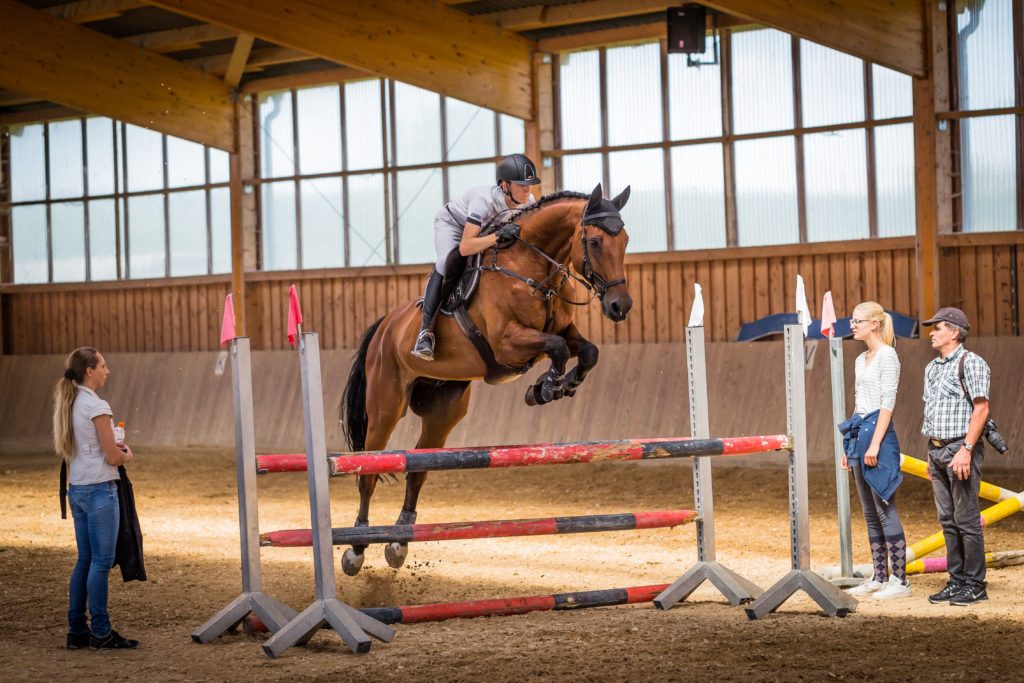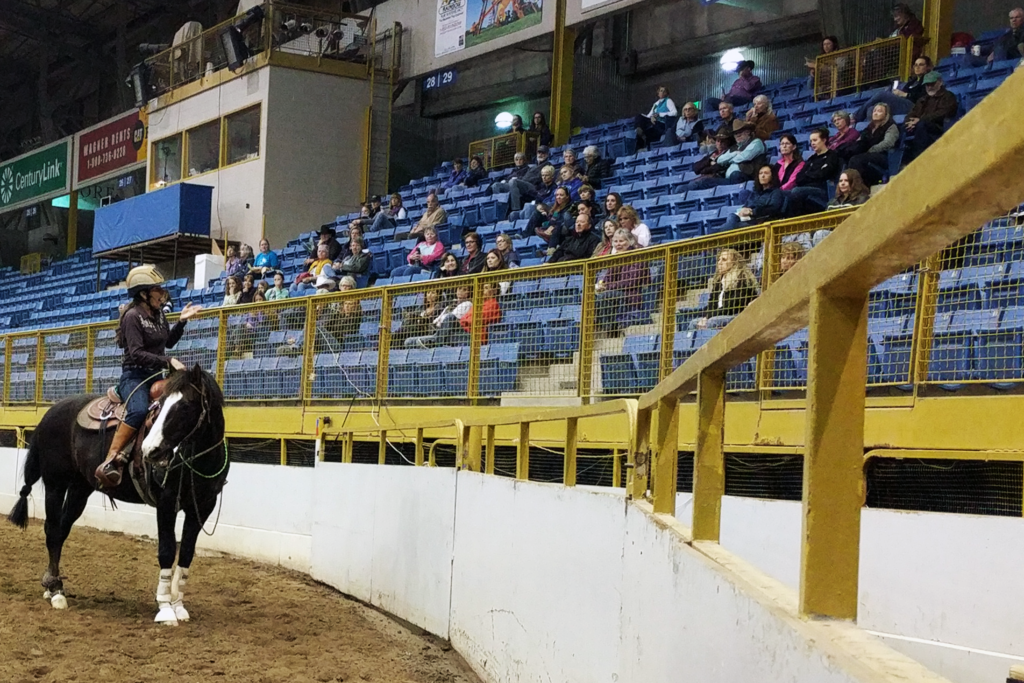Becoming a Leader for Your Students and Horses
By Julie Goodnight
As a horsemanship or riding instructor, you want to strive to be a good leader and interact with fairness with all of your students and clients. In addition, you want to teach your riders to be good leaders to the horses they ride. Leadership is not just about your actions or intentions; it is also about your honesty, integrity, and fairness. Authority is not the same as leadership—just because you have authority over others does not mean that they have a desire to follow you or accept you as their leader.
Developing strong leadership skills with our horses can also help us become better leaders with people, especially if we think about the lessons the horse provides to us regarding leadership. In addition, you can teach your students to judge whether their mount is questioning their leadership skills.
Horses have a sense of fairness, just as they are good judges of leadership and trustworthiness. Because they are herd animals, they are mindful of leadership, hierarchy, rules, and ramifications of behavior. They are instinctively drawn to strong leadership, with a compelling desire to be accepted in a herd and a profound fear of banishment from the herd. Both horses and students thrive when leadership, rules, and structure exist, and they flail in the absence of it. Horses can be a reflection of our leadership skills with students and clients, as well.
Horses and students usually know when they are breaking a rule or pushing a boundary, and they usually responds well to fair discipline. But when rules are unclear or inconsistently enforced, when you say one thing but then do another, when you inadvertently punish even though no punishment was intended, or when the punishment does not fit the crime, both horses and students will feel that they are being treated unfairly, and trust in you diminishes.
So how do you know if the horse feels like the rider is treating him unfairly? Reactions from the horse may range from a slight tensing and lifting of the head, to shaking the head, refusals, running through the bridle, crow-hopping, bucking, or shutting down (becoming nonresponsive). While there can be a variety of causes for these reactions, whenever a horse is frustrated, it’s always important to consider your own actions and how they may be viewed by the horse. After all, none of us are perfect leaders for our horses or our students.
Here are some common scenarios which a horse might consider unfair. It’s important to coach riders not to do these things or the horse will question their leadership skills.
Unfair Treatment #1: Asking him to do something then punishing him for doing it An easy way to test a horse’s sense of fairness is to cue him to canter, then hit him in the mouth with the bit when he does. How he reacts to that will tell you how tolerant he is. This happens far more often than you think, regardless of rider level. Sometimes it’s related to lack of skill; other times it is reactionary—a rider fearful of the canter often snatches the horse up as soon as they respond to the cue. From the horse’s point of view, you asked him to do something then you punished him for doing it. Responses from this kind of conflicting signal can include: a small shake of the head, crow-hopping, a refusal to canter anymore, or bucking. Usually it is the horse that is blamed, although from the horse’s point of view, this is not fair or honest.
Unfair treatment #2: Asking for one more time Let’s say you or your student has been working on something challenging with their mount—like jumping gymnastics. You started with a few rails in a line of jump-every-stride obstacles and gradually added more until it’s a very challenging and strenuous exercise. After some stops and starts and failed attempts, the horse finally goes through the full gymnastic correctly. You are thrilled! So what’s the first thing you say? “Let’s do that one more time.”
So, he’s already given you his best and that wasn’t good enough; now he’s tired and emotionally spent and you ask for more. Things fall apart, and what should have been a great training session turns into a salvage effort. Fairness would dictate that you recognized your horse’s best effort and let him rest on that.
Unfair treatment #3: Setting the horse up for failure
This is the actual real, unedited scenario that stimulated this article. A past clinic attendee whose horse had come uncorked due to the clinic atmosphere wrote to me about how her horse had recently done great in an arena full of 15 other horses. When they finished, he loaded without hesitation into the trailer. However, since her horse was tired and away from home, she then decided to practice trailer loading. Her horse balked, and a nearby rider had to assist her.
It was indeed unfair to finish and then ask her horse for more. Clearly the horse had given of himself, worked very hard, and done the right thing. He had every reason to believe he was done and would receive the kindness of comfort from his leader. Instead, he was set up to fail. He had already loaded once without resistance.
Should we expect perfect patience from our mounts in every situation or at the same level we expect from more patient or experienced horses? No. Should we make our horse, or our students for that matter, jump through hoops when they are anxious or aggravated? No. Should we ALWAYS set our horses and our students up for success? YES! That is what makes a good training exercise.
Good leaders do not expect their followers to do things beyond their capabilities. If we think an individual (horse or human) may not be capable of giving us what we want in that moment, it’s best not to ask. Do something else instead. Come back later and address it when the chances of success are greater or when you have removed other obstacles.
Always make sure your expectations are realistic and attainable. Have high expectations, but always remember to recognize efforts from both your horses and your students. Everyone wants the feeling of a job well done.
[Author Bio] International trainer and clinician Julie Goodnight is the international spokesperson for CHA, a CHA Master Instructor, and the star of RFD-TV’s “Horse Master with Julie Goodnight.” JulieGoodnight.com
Becoming a Leader for Your Students and Horses Read More »


